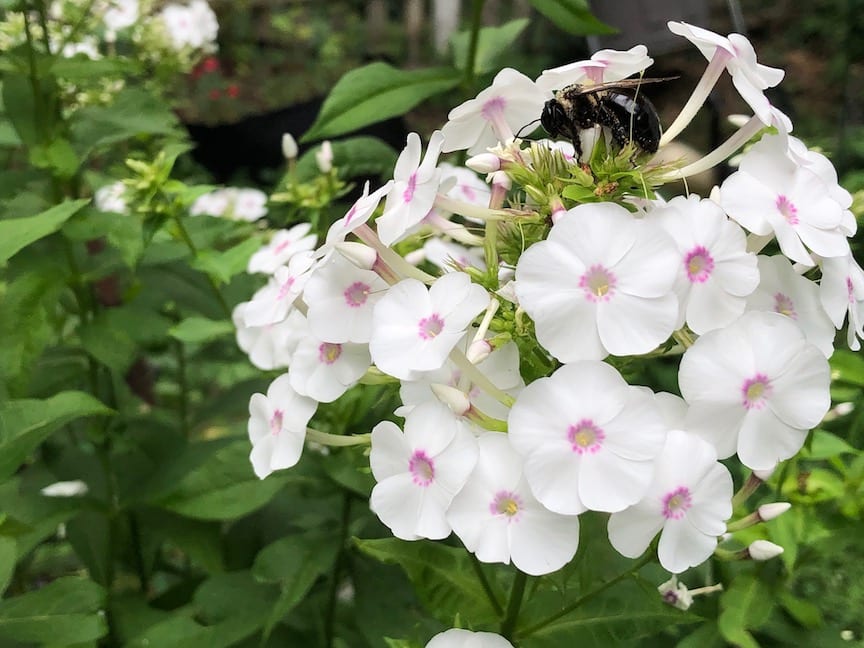
Gardening Green with Doug — Perennials You Should Grow That Will Return Each Year
By Doug Oster
August 18, 2020
Lamenting another week without rain while walking through the garden, late blooming perennials happily provide beauty, regardless of the dry weather.
Perennial plants will return seasonally. They differ from annuals, like marigolds and impatiens, as most of them have shorter bloom times. The advantage though, is that these varieties don’t need replanted every season, and in many cases, increase in size as they mature.
The key to making them thrive begins right at planting time. Improve the soil with organic matter, like compost or well-aged animal manure.
This is the perfect time of year to look around garden centers and nurseries for bargains. It just so happens this is planting season, too. As the days get shorter and cooler, it’s conducive to root growth, as opposed to top growth and flowering.
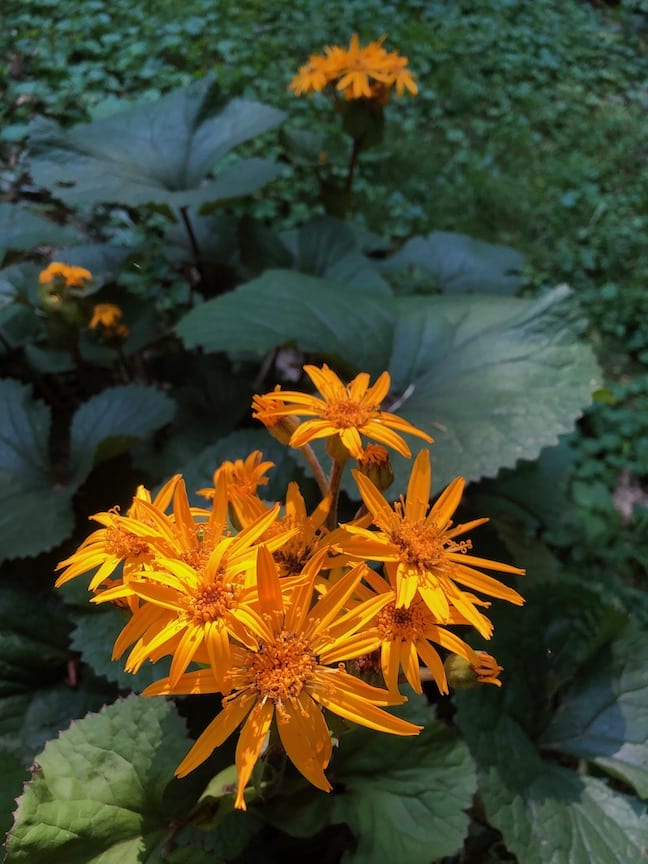
Getting started with fall perennial planting
For all the plants discussed below, once the compost is incorporated into the planting hole, and the perennials are watered until established, they won’t need anything else from the gardener. You’ll be able to count on them to bring joy as they bloom year after year.
(Note: Everything on this list is deer resistant in my garden. But that doesn’t mean those four-legged marauders will leave them along in yours.)
Ligularia ‘Britt Marie Crawford’
Ligularia ‘Britt Marie Crawford’ has been a staple in my shade garden for well over a decade. For perennials, it’s important to remember that for most of the season it’s the foliage that’s the star. This cultivar has stunning purple, green and bronze foliage that makes it a great plant in the landscape. When the orange/yellow daisy-like flowers appear, it becomes a star growing in front of a white picket fence, which surrounds the vegetable garden.
‘Britt Marie Crawford’ has never been fertilized or watered, yet even in the drought many of us are experiencing now, it is blooming like mad.
Another bonus are the pretty seed heads that bring interest to the plant at the end of the season.
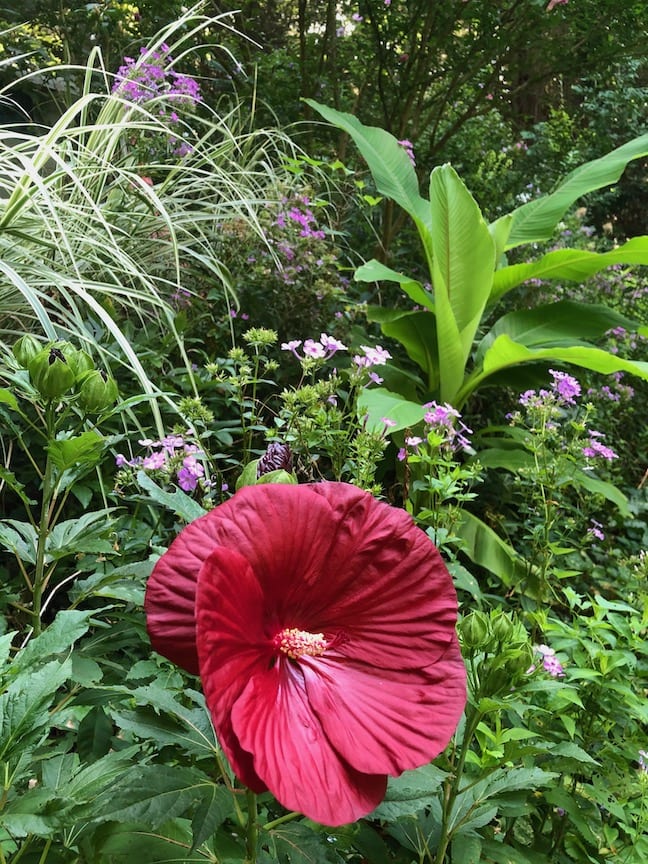
Perennial hibiscus plants
There are a plethora of perennial hibiscus plants available locally, it’s just a matter of finding the right one for your garden. I love to swoop in on a garden center after they are done blooming and get them for a song.
These are different than the showy tropical varieties. Those tender varieties will bloom from frost to frost, but need to come indoors when things get cold.
The perennial varieties put on large round flowers in shades of red, pink, white, or a mixture of all three. Some even have splendid foliage. They love the sun but will perform with just four hours of bright sunshine.
Hibiscus start blooming in August and will continue blooming for a few weeks, depending on the weather.
Windflower (pictured right)
Anemone or windflower begin blooming around the same time as hibiscus, making them good partners. I love ‘Queen Charlotte’ for its tall pretty purple flowers and luminescent orange centers. The flowers dance in the summer breeze and bloom prolifically. There are lots of other cultivars, short, tall and even some with double flowers.
Phlox (below left)
I inherited a few varieties of phlox which were in the garden when I moved here over 20 years ago. They are the most carefree, late bloomers in the garden—almost like weeds. Their subtle fragrance harkens back to another time. The deer will nip off the tops early in the season, which is nature’s way of making more flowers through selective pruning.
Hardy bananas (below right)
The foliage of hardy bananas gives the garden a tropical look. In the right conditions they can grow 20 feet tall. In my shady garden, they get about six feet tall. They continue to expand and can be divided; I like to put them in containers. At the end of the season the container plants are stowed in an unheated area and the plants in the ground are protected with a thick layer of straw.
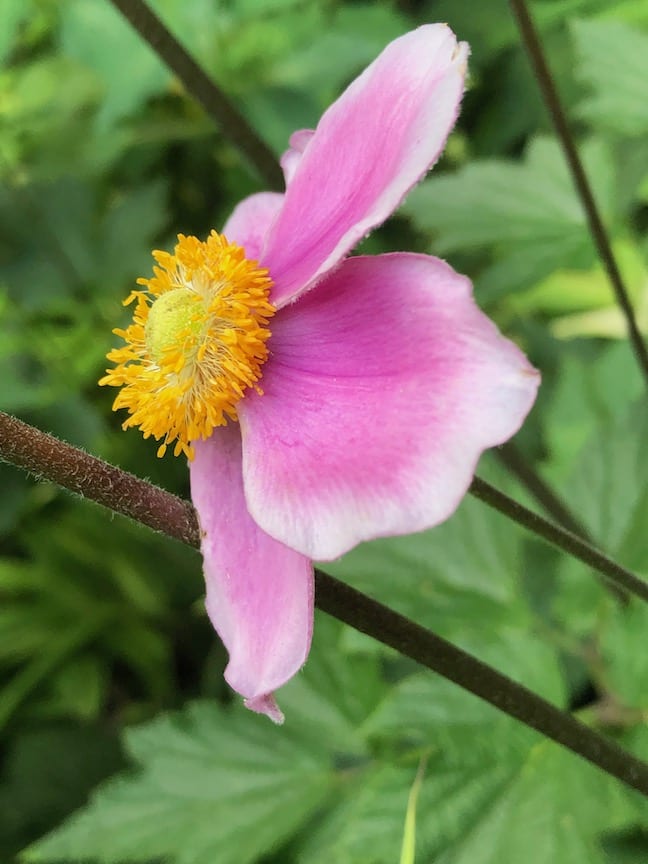
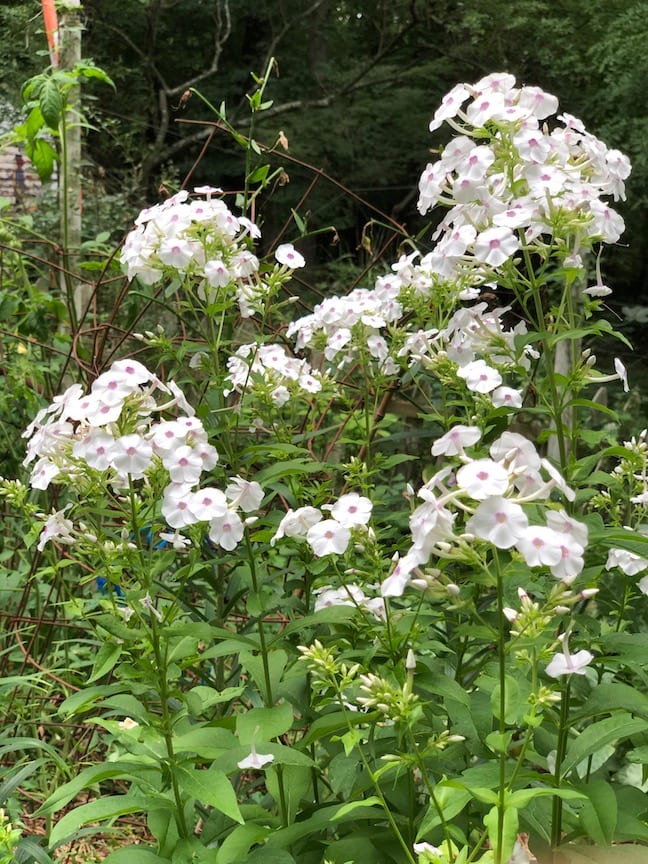
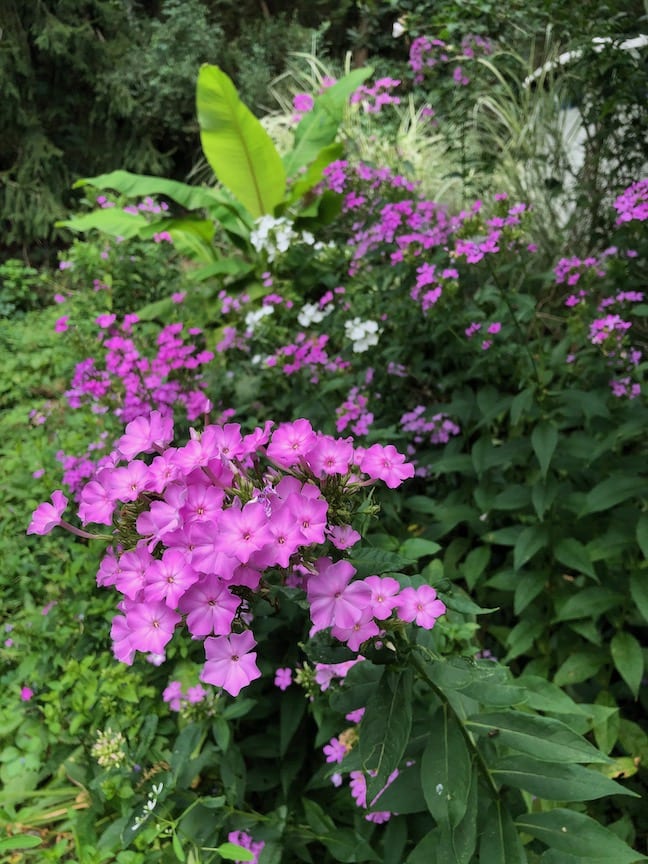
Corydalis lutea
The final plant on my list is one I talk about every chance I get—Corydalis lutea. Corydalis lutea is amazing in that it begins blooming in April and continues through November or later, depending on how winter begins. It will grow in dry shade or almost full sun. In the shade, the grayish, green foliage gets 18 inches tall. Out in the sun, it reaches three feet covered in pretty yellow flowers. Best of all, it throws seeds everywhere, colonizing beds in two or three years.
Since it’s not sending out underground runners, the Corydalis lutea plants can be easily pulled, transplanted, or given to garden friends, who will love you forever and mention your name as they walk by the plants.
All of these perennials add color to the garden as summer fades and will continue to thrive for many years to come.
Doug’s watering tips
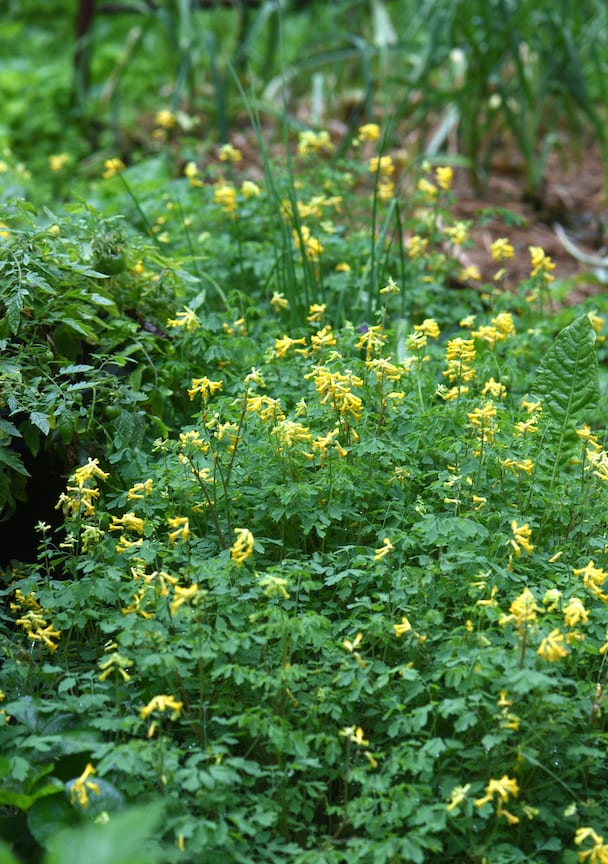
If your garden is a dry as mine, here’s what I’m doing to keep plants happy until rain comes:
- Water in the morning. This gets the plants the ready for the day, but also allows the foliage to dry out. That’s the best way to avoid fungal issues, especially on plants like tomatoes, which are prone to those diseases.
- Soak the plants when watering. The roots will follow the moisture deep into the ground and when things get tough, they can call up the water.
- Water at the base of the plant to keep foliage dry.
- This video shows how I’m watering and what I’m doing for a new lawn. You might even get to see me run through the sprinkler!
![]()

[…] are also on sale now. These plants are tough, beautiful and low […]